The most popular vegetable juice is tomato juice. It is prepared from juicy and ripe tomatoes, so it is almost as healthy as fresh tomatoes. This colorful drink is rich in nutrients, low in calories and fat. Often it is used in the form of a drink, and is also an ingredient for the preparation of soups, sauces, various alcoholic and non-alcoholic cocktails (for example, “Bloody Mary”, “Michelad”). In this article we will analyze the benefits and harms of tomato juice.
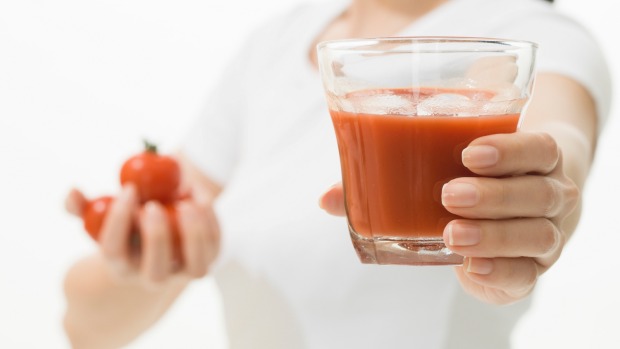
Structure
This product has a beneficial effect on human health thanks to its constituent components, such as:
- Vitamins: A, E, PP, C, group of vitamins B.
- Trace elements: iron, calcium, chlorine, magnesium, sodium, potassium, phosphorus.
- Nutrients: proteins, fats, carbohydrates.
Calorie content
Tomato juice is a fairly low-calorie product that allows you to use it in the fight against extra pounds. Calorie content of the drink varies between 17-23 kcal per 100 grams. Juice of industrial production can have a higher calorie content by adding garlic powder and various spices.
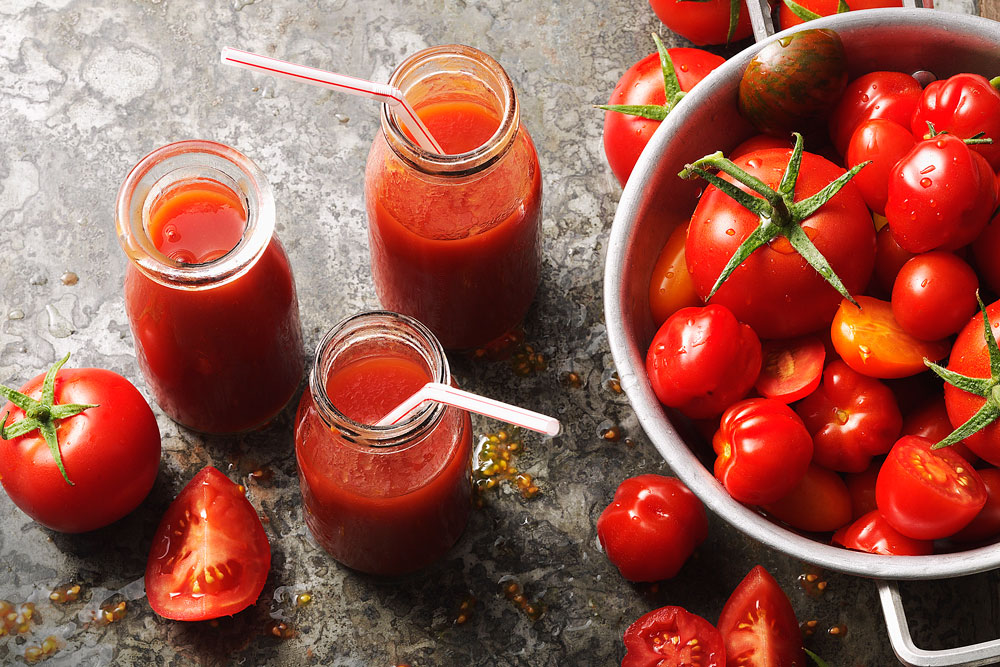
The benefits of tomato juice
Fruit and vegetable juices contain a different set of vitamins and minerals, which affects their effect on the body. What is tomato juice good for?
Due to the antioxidant lycopene content, which gives the fruit a red tint, drinking the drink can help reduce the risk of stroke, atherosclerosis, diabetes, prostate cancer, as well as diseases of the digestive system. Tomato juice contains lycopene even more than fresh tomato, since the release of this antioxidant occurs during heating, which occurs during cooking.
A drink rich in lycopene will be beneficial for healthy skin and can also protect against sunburn.
Vitamins contained in tomato juice act as antioxidants that neutralize free radicals to stop oxidative stress. Free radicals cause damage and destruction of cells, which contributes to the development of diseases. Minerals play an important role in ensuring the proper functioning of the body.
With a sleep disorder, a glass of tomato juice will help you sleep better. During periods of increased nervous tension or stress, it will help to relax, as it contributes to the production of serotonin.
This is a great product for people who are struggling with excess weight, due to the low calorie content. It can be drunk not only as part of the diet, but also as a supplement to your standard diet.
Tomato juice will benefit during pregnancy. The drink contains citric, malic and oxalic acids, which help the expectant mother normalize the metabolism. Juice copes well with such a delicate problem as constipation, which often occurs during pregnancy, and helps prevent blood clots in the lower extremities.
The maximum benefit is brought only by freshly squeezed juice without additives. It is ideal for satisfying hunger between main meals, as well as during fasting days.
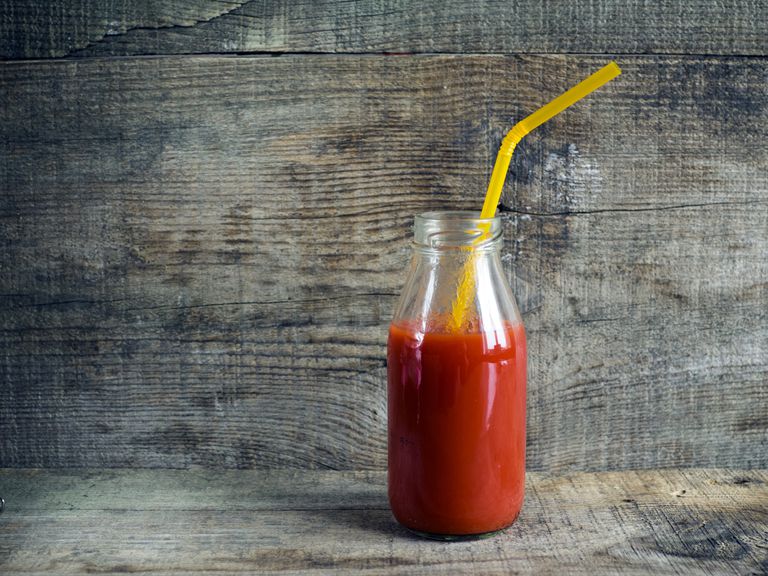
The harm of tomato juice
Even the most healthy drink can be harmful for people suffering from certain diseases or consuming the product in high quantities. Although tomato juice has many health benefits, it also has several disadvantages.
- The sodium in its composition helps the functioning of the nervous system and regulates blood pressure, but its excessive consumption can easily cause health problems, ranging from high blood pressure and ending with heart disease. Therefore, you must carefully read what is written on the label, and choose a product with a low sodium content.
- The increased potassium content found in tomatoes can lead to irregular heartbeats and other cardiovascular problems, as well as a decrease in muscle control.
- Excessive consumption of tomato juice can thicken blood and cause blood clots. With caution, it should be used with increased acidity of gastric juice, gastric ulcer, urolithiasis.
- Diabetics should not abuse this product because of the relatively high glucose content.
- According to the American Cancer Society, consuming more than 30 mg of lycopene per day can cause nausea, diarrhea, dyspepsia and bloating.
- When breastfeeding, tomato juice should be drunk with caution. Tomatoes, like all brightly colored vegetables and fruits, in babies can cause skin rashes. With the formation of intestinal microflora, these manifestations will disappear. Children can introduce tomato juice into the diet starting from the age of three.
- An allergic reaction to tomatoes is rare, but it can be found in people who are allergic to pollen.
When using tomato juice, like any other products, you need to know the measure, then it will bring the body only benefits.
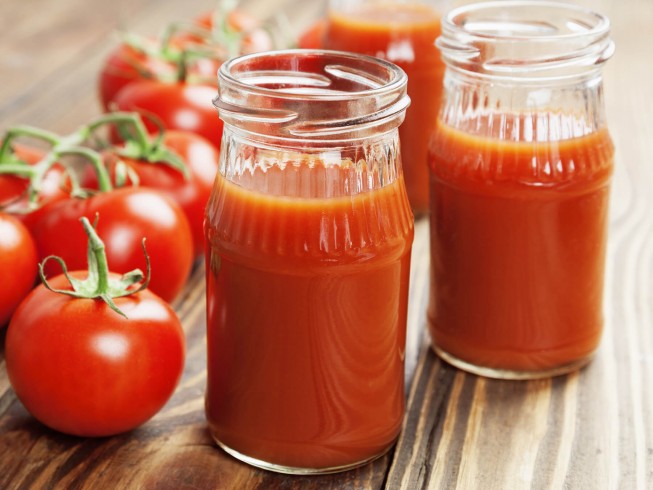
Selection rules
There is not always time and opportunity to go to the market for seasonal juicy tomatoes and make juice yourself. In this case, is it possible to drink tomato juice purchased at the store?
The answer is yes. If you prefer industrial juice, then you need to choose it correctly.
Avoid packages with the word “freshly squeezed”, because juice can only be considered as such during the first 2 hours after squeezing. Juice that is on store shelves is not freshly squeezed.
100% tomato juice can be of two types: direct extraction (produced directly during the harvest) and restored (obtained from tomato paste). In the production process of direct extraction juices, the smallest number of industrial processes are involved, which allows preserving useful properties in the final product. Often, such juices are presented in glass containers and are higher in cost than reconditioned ones. However, as a result of independent studies, it was found that there is no significant difference between these types of drinks.
Another question is how long the product was stored before purchase. The date of manufacture of direct-squeezed juice often coincides with the time of harvest. A reconstituted beverage can be produced all year round.
Juice made from fresh tomatoes has a thick consistency, opaque, bright red color. A quality drink in its composition should not contain dyes or preservatives.
Freshly prepared product is much healthier than canned, so it is better to make tomato juice yourself.
Storage rules
Juice prepared at home should be consumed immediately, since its beneficial properties are lost over time.
The shelf life of packaged tomato juice is on average 12 months, and open packaging can be stored for up to 4 days.
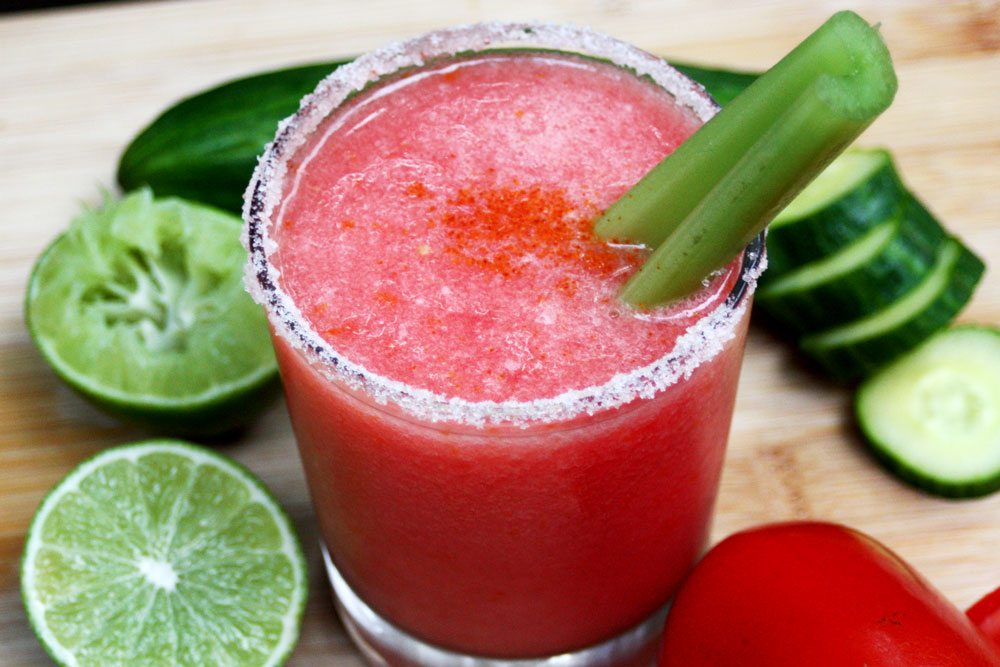
Terms of use
Here are some simple tips that will help you get the benefit from a tomato drink .
- The best time to eat is before a meal. Juice from tomatoes will prepare the digestive system for eating. Once in the stomach, it activates the production of gastric juice.
- Is it possible tomato juice while waiting for the baby? The answer is yes. Half a glass of juice in the morning on an empty stomach will help get rid of nausea, which is important for pregnant women suffering from toxicosis.
- The acids contained in tomato juice are poorly combined with starch-containing (potatoes, bread, pasta) and high-protein (cottage cheese, eggs and meat) products. When used together, they can form compounds that are deposited as stones in the urinary system.
- The most suitable foods for consumption with tomato juice are cheese, nuts, other vegetable juices and herbs.
- Salt should not be added to the drink; it destroys vitamins and minerals.
- A spoonful of vegetable oil added to a glass of juice will help vitamins better absorb.
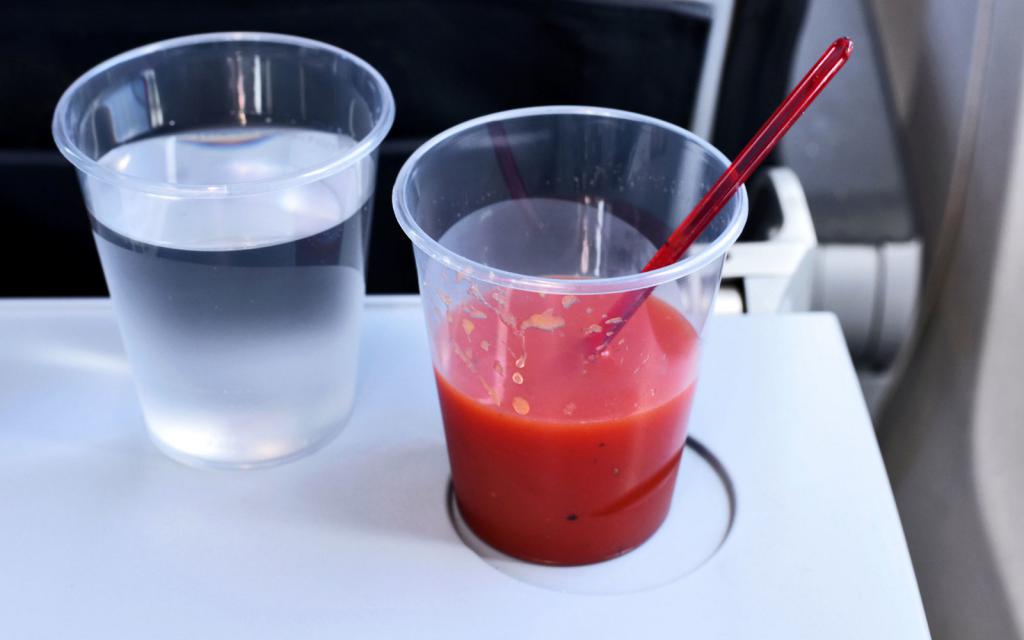
Interesting Facts
- Tomato juice is very popular among aircraft passengers. This is due to the fact that a very loud noise, such as the roar of aircraft engines, changes our sense of taste by dulling sweet aromas and enhancing the signature taste of tomatoes.
- Tomato juice, like some other drinks (for example, Coca-Cola), can be used to clean old coins, copper, and brass.
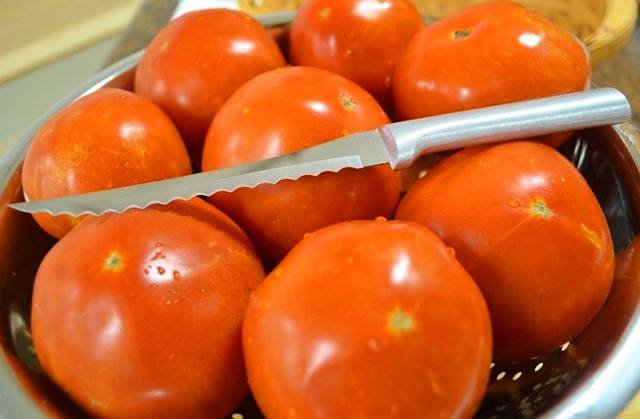
findings
Tomato juice is a healthy low-calorie drink that can help enrich the diet with the necessary vitamins and minerals, in the prevention of diseases of the stomach and intestines, as well as cardiovascular diseases. The most useful is freshly squeezed juice, prepared independently.